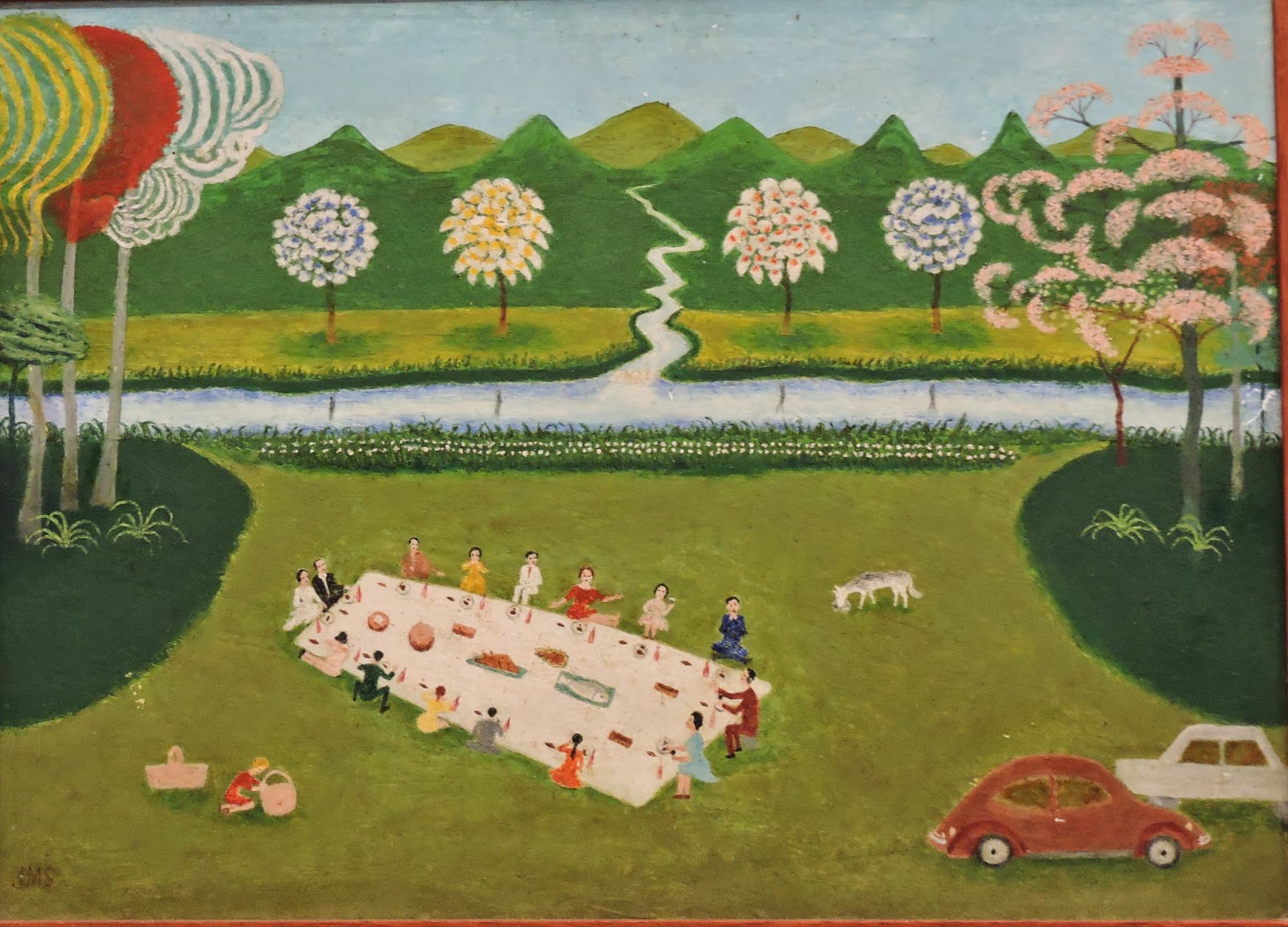 |
| Casa Rosada, Office of the President |
 |
| Caminito with pope |
The old fishing area of La Boca sports a new icon on its flagship building, the Caminito, Pope Francis. Argentines are so proud of the first South American pope who came from their country.
 |
| macrame'd tree trunk, La Boca |
We highly recommend our hotel, the Hub Porteno, a very small hotel in the heart of Recoleta, Buenos Aires' premier shopping district, with lots of high end hotels. The rooms are very spacious, the restaurant is excellent and the staff more helpful and thoughtful than any I have encountered in any other hotel in the world (quite a superlative, I know, but true).
 |
| La Boca window |
We met with U.S. embassy officials--always a must for us and always valuable--as well as an Argentine university professor who also gave us an excellent and informative presentation about Argentina's economy and politics.
We met at the U.S. Ambassador's official residence, a beautiful palace built by the Bosch family between 1920 and 1925. We enjoyed a tour by the architect in charge of maintaining the palace before our briefing.
 |
| salon in ambassador's residence where we met |
We learned a lot about the current debt crisis, triggered when several U.S. hedge funds refused to accept a negotiated "haircut" on their Argentine bonds that was agreed to by 93% of the other bondholders. A U.S. judge refused to let Argentina pay off the majority of bond holders unless they also paid the hold-out hedge funds. That triggered yet another Argentine default which is still ongoing. Everyone we've talked to seems to be waiting for elections a year from now when the current president, who is term-limited, is replaced by someone new (though all 3 candidates are from her party). The hope is that the economic policies that have brought the current slump will be changed.
 |
| doorway in ambassador's residence |
These policies include both import and export restrictions, so that companies have difficulty importing raw materials for their products as well as goods of all kinds. Shops have closed because they can't get the products they need to import. On the other side, companies cannot export products without paying a 35% export tax, hard to understand when the country is desperate for trade and foreign exchange. So, some companies have resorted to doing an exchange of goods, such as exporting wine in order to import tractors, thereby avoiding the financial penalties of doing business here. There are also draconian currency controls, making it nearly impossible to repatriate profits or to move money out of the country. Add to that high inflation and you have a dismal economic picture.
Education suffers from a lack of funding. Teachers and professors are underpaid or not paid at all, so that the public schools are terribly inadequate. On one international measure, for example, 80% of Chinese students typically score in the 80th percentile and above while only 3 - 5% of Argentina's students hit those high scores. Parents who can afford Catholic and other private schools send their kids there, but the vast majority of Argentines can't afford that for their children.
 |
| Tango--Argentina's famous dance |
 |
| Grandmothers' scarf painted on pavement |
During this time, young women who were arrested and pregnant were kept alive until they gave birth. Then they were murdered and their babies given to an Argentine family--not the young woman's family. For decades, the grandmothers of these babies have marched in the Plaza de Mayo, the central government square, demanding to reclaim their grandchildren. They would march around the Plaza de Mayo, the central government square in Buenos Aires, because they were not allowed to "gather and protest". They wore white scarves so everyone knew who they were and now these scarves are painted on the pavement of the square. Several of these poignant reunions of grandmothers and grandchildren have happened, including the reuniting of the leader of the grandmothers with her grandson several months ago.
 |
| roses blooming in Palermo rose garden |
On the bright side, the gardens are in full bloom. We walked through the beautiful rose garden in Palermo. The jacaranda are beginning their burst of purple flowers which turn Buenos Aires into a cloud of lavender in November. Many people feel optimistic about the upcoming elections and expected changes in their country. Argentines dance the tango with zest and skill. One person characterized tango to us as "a sad thought that one dances.". Indeed, we preferred the dancing to the singing.






























